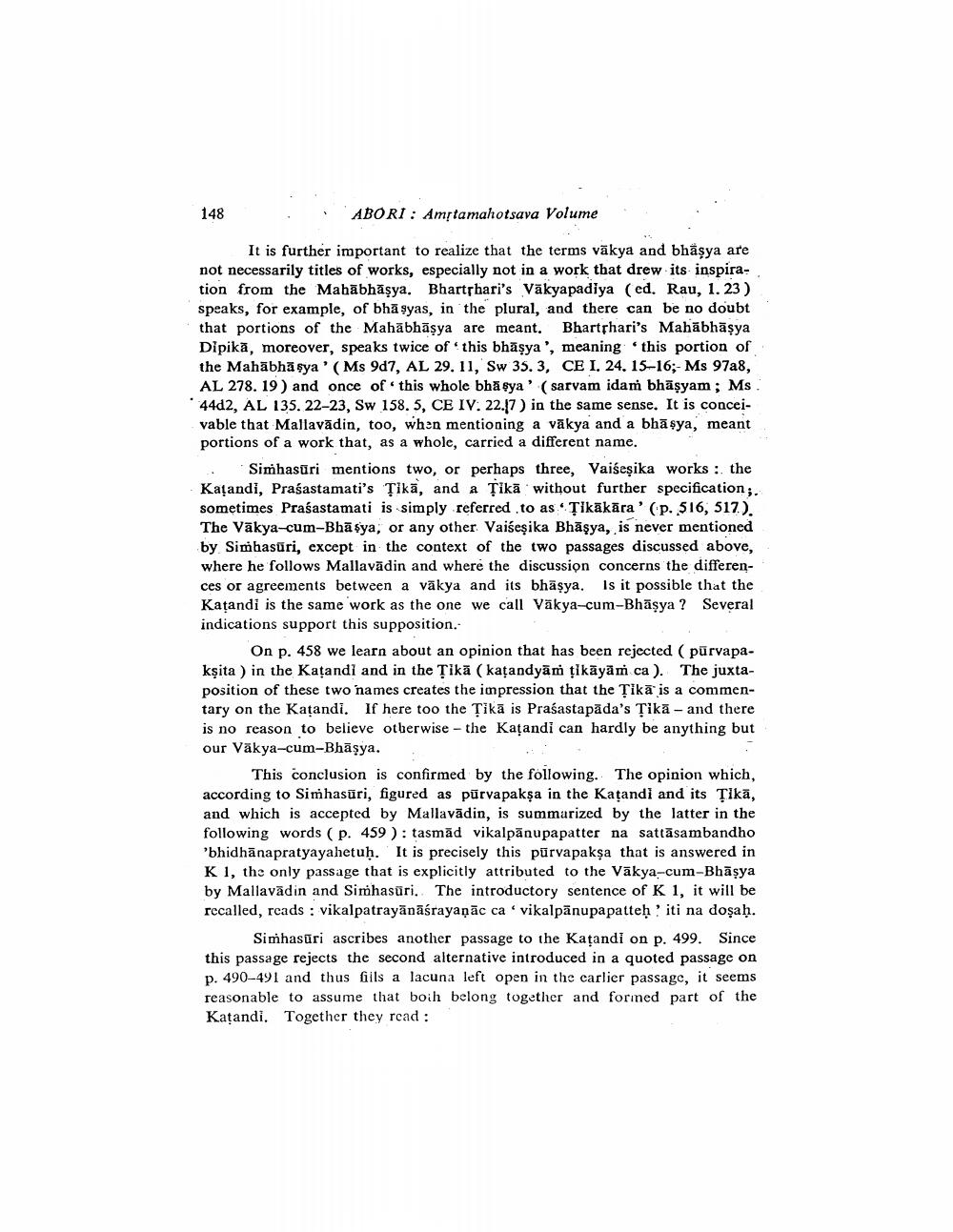________________
148
ABORI: Amṛtamahotsava Volume
It is further important to realize that the terms vakya and bhāṣya are not necessarily titles of works, especially not in a work that drew its inspiration from the Mahabhāṣya. Bhartṛhari's Vakyapadiya (ed. Rau, 1.23) speaks, for example, of bha syas, in the plural, and there can be no doubt that portions of the Mahabhāṣya are meant. Bhartṛhari's Mahābhāṣya Dipika, moreover, speaks twice of this bhāṣya', meaning this portion of the Mahabhāṣya' (Ms 9d7, AL 29. 11, Sw 35. 3, CE I. 24, 15-16;- Ms 97a8, AL 278. 19) and once of this whole bhāṣya' (sarvam idam bhāṣyam; Ms. 44d2, AL 135. 22-23, Sw 158. 5, CE IV. 22.17) in the same sense. It is conceivable that Mallavadin, too, when mentioning a vakya and a bhāṣya, meant portions of a work that, as a whole, carried a different name.
Simhasüri mentions two, or perhaps three, Vaiseṣika works: the Kalandi, Prasastamati's Ţikā, and a Țika without further specification;. sometimes Prasastamati is simply referred to as Ṭikākāra' (p. 516, 517). The Vakya-cum-Bhasya, or any other. Vaiśeşika Bhāṣya, is never mentioned by Simhasüri, except in the context of the two passages discussed above, where he follows Mallavadin and where the discussion concerns the differences or agreements between a vakya and its bhäṣya. Is it possible that the Kaṭandi is the same work as the one we call Vakya-cum-Bhāṣya? Several indications support this supposition.
On p. 458 we learn about an opinion that has been rejected (purvapakṣita) in the Katandi and in the Tikā (kaṭandyām ṭikāyām ca). The juxtaposition of these two names creates the impression that the Tika is a commentary on the Katandi. If here too the Tika is Prasastapāda's Ţikā - and there is no reason to believe otherwise the Kațandi can hardly be anything but our Vakya-cum-Bhāṣya.
This conclusion is confirmed by the following. The opinion which, according to Simhasuri, figured as purvapakṣa in the Kaṭandi and its Ṭikā, and which is accepted by Mallavädin, is summarized by the latter in the following words (p. 459): tasmad vikalpānupapatter na sattasambandho 'bhidhānapratyayahetuḥ. It is precisely this purvapakṣa that is answered in K 1, the only passage that is explicitly attributed to the Vakya-cum-Bhāṣya by Mallavadin and Simhasuri. The introductory sentence of K 1, it will be recalled, reads: vikalpatrayānāśrayaṇāc ca vikalpānupapatteḥ iti na doṣaḥ.
Simhasūri ascribes another passage to the Kațandi on p. 499. Since this passage rejects the second alternative introduced in a quoted passage on p. 490-491 and thus fils a lacuna left open in the earlier passage, it seems reasonable to assume that both belong together and formed part of the Kaṭandi. Together they read:




